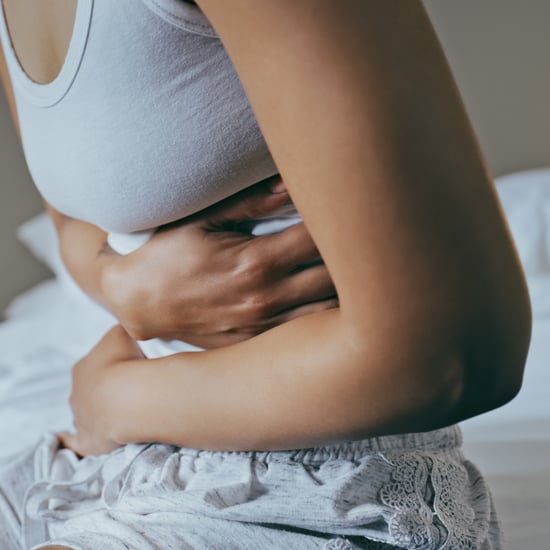How to Treat Endometriosis
An Explainer on Common Endometriosis Treatments, From Pain Management to Surgery

Horrible cramps shouldn't just be brushed off with a heating pad's assistance each month. That's because regularly experiencing painful periods is one of the most common symptoms of endometriosis — a serious health condition where the tissue that grows inside the uterus begins to grow outside of it. This condition can cause extreme discomfort and even infertility.
Thanks largely in part to those who have shared their personal experiences with the disorder, the signs of endometriosis — which can also include things like pain during sex, bleeding in between periods, and digestive issues — are finally becoming more widely discussed. And considering it's estimated that 200 million people worldwide have endometriosis, it's certainly about time. What you still might not be aware of, though, is how endometriosis is treated.
For starters, a trained medical doctor needs to diagnose you with the condition. "It is diagnosed by finding endometriotic implants in the pelvis or other areas of the abdomen during surgery," Yvonne Bohn, MD, a board-certified ob-gyn, said. This minimally-invasive surgery is called a laparoscopy.
It's worth noting that, unfortunately, an endometriosis diagnosis is notorious for taking a very long time. According to the Endometriosis Foundation of America, many sufferers wait as long as a decade for their official diagnosis.
According to information presented by Johns Hopkins Medicine, a medical doctor's suggested treatment plan for diagnosed endometriosis is dependent on factors like the extent of the condition, symptoms, current health and medical history, and also the desire to get pregnant. Therefore, the treatment for one person's endometriosis might be considerably different than someone else.
However, two main treatment avenues tend to be medication and surgery.
The American College of Obstetricians and Gynecologists notes that when pain is the main issue associated with endometriosis, medication is usually the first approach suggested by doctors — for example, taking pain-relievers, like NSAIDs, when pain pops up.
Dr. Bohn says another medication treatment plan consists of suppressing estrogen, which is what stimulates the endometriosis implants to grow and bleed. Dr. Bohn said this can "include taking oral contraceptive pills without taking the placebo pills to prevent a period," oral and injection-based drugs that suppress the ovaries production of estrogen, and injections that suppress ovulation.
These are considered hormonal therapies.
Surgery is another way endometriosis is commonly treated, which celebrities including Chrissy Teigen have revealed going through.
"Surgery is typically reserved for severe cases or large ovarian cysts called endometriomas," Dr. Bohn said. "Surgery can be just to remove the implants or as aggressive as removal of [the] uterus and ovaries."
The Mayo Clinic notes this surgery is typically done laparoscopically and may improve fertility efforts and the pain experienced.
However, Dr. Bohn also added that endometriosis does have the potential to return with conservative surgery.
Outside of medical treatments, there are other methods that could help sufferers manage their symptoms. Dr. Bohn said this can include things like using a hot water bottle or heating pad on the abdomen to soothe pain, while some evidence suggests incorporating certain foods into your diet could help too. And while the Mayo Clinic notes that research is lacking in alternative treatments for endometriosis, some claim acupuncture is helpful in providing relief.
Remember: for all endometriosis concerns — and any questions about your health — it's crucial to reach out to a trained medical doctor for advice. Only they can help guide you to the correct treatment option.








